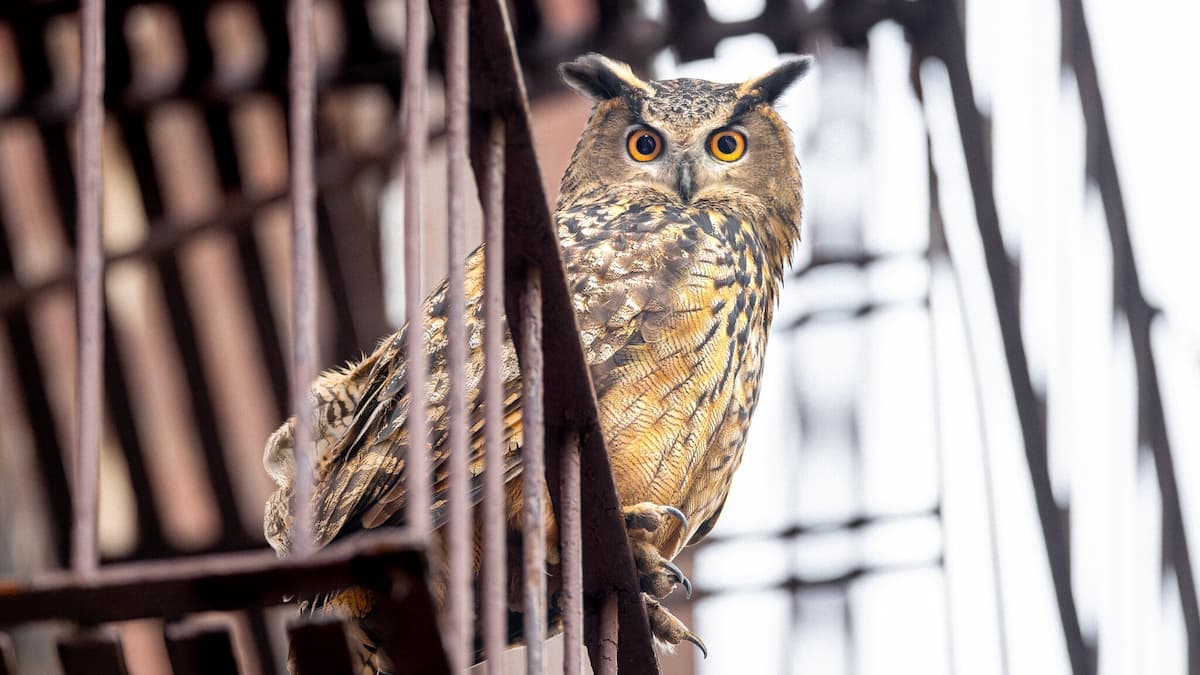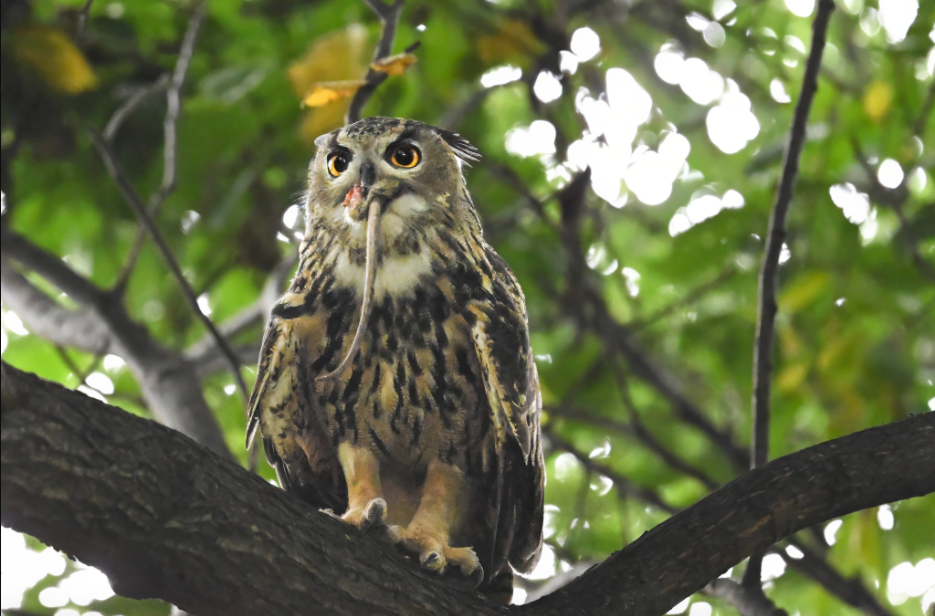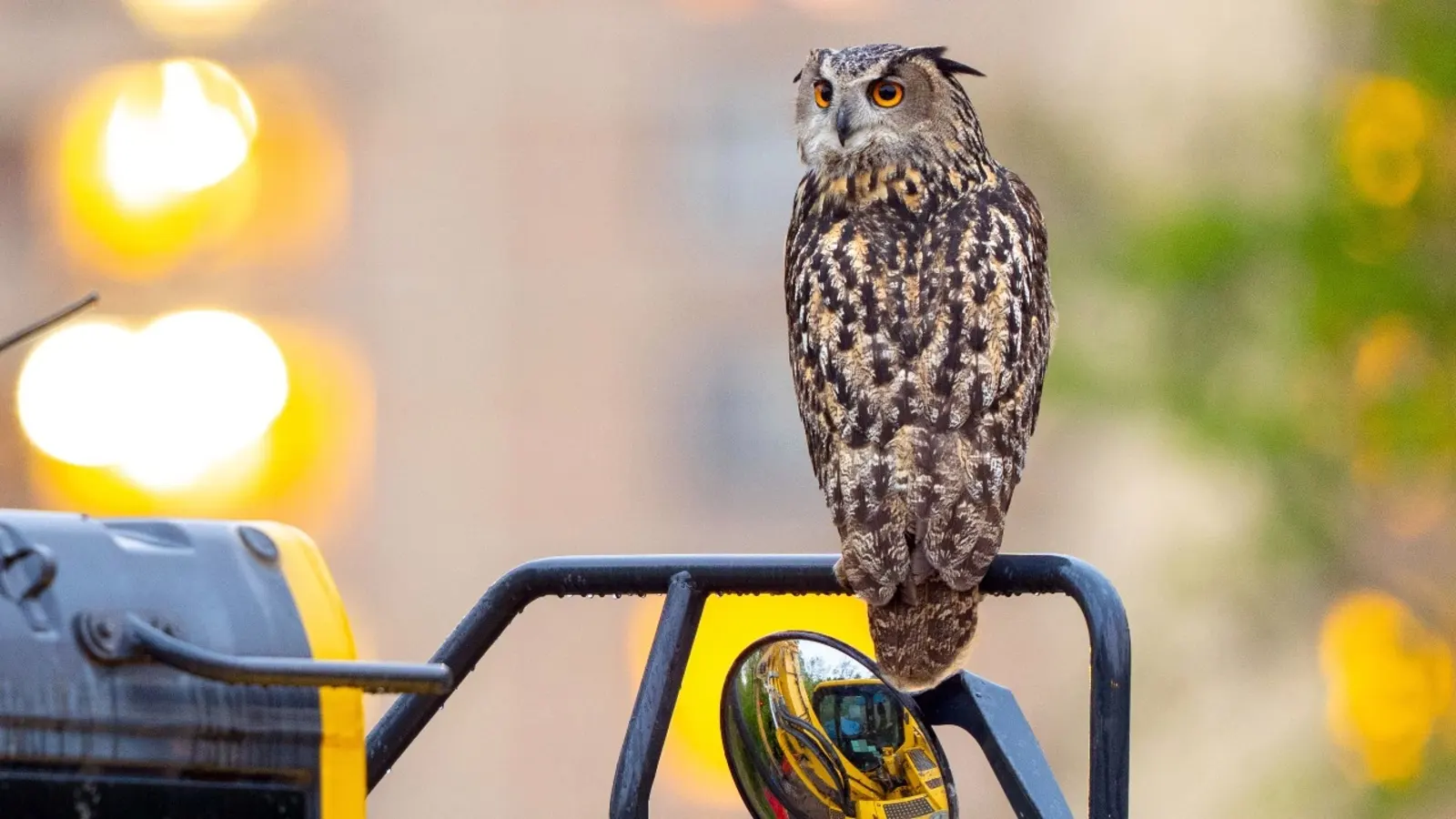Owl Down: RIP Flaco

Late Friday night, February 24th, Flaco the famous Eurasian eagle owl was reported dead from a collision with a building on 89th Street in Manhattan. In the year of Flaco’s fugitive freedom, he became an outlaw icon, igniting the imaginations of locals, attracting distant tourists, and garnering press in major outlets the world over. Notably, Flaco’s “Year of Freedom” earned him a multi page spread in the New York Times earlier this month, chronicling his offbeat penchant for exploring the city and showcasing a number of remarkable photographs, professional and amateur, of New York’s latest “It Girl”.

Flaco was one of a kind; as an exotic owl, he was a charismatic megafauna, capable of inspiring humans to consider other birds, owls, and wildlife in urbanity. Flaco was an exceptional entry into this pantheon—he attracted advanced bird photographers and novice naturalists to his haunts around Central Park, but his online celebrity enamored even more spectators to his story, eclipsing other notable New York owl leading ladies, like Geraldine and Barry. Above all, he was a certified New Yorker, whose story of “immigration”, captivity, escape, and adaptation melted littletown blues and satisfied vagabond shoes.
“If I were to leave the confines of everything I’ve ever known, would I be able to adapt, hunt, find shelter, attract a mate, thrive?”

First, the basics. Flaco was born in March 2010, and lived twelve years in an enclosure the size of a bus shelter in the Central Park Zoo. In February 2023, an individual or group of “vandals” damaged his exhibit, leaving a hole in his mesh aviary through which to escape. Initially, park rangers and the public watched intently as he fasted and evaded attempts of recapture, before, after about a week, producing a pellet that proved he had adapted outside of captivity to prey on the local delicacy of city rats. This introductory episode alone was enough to inspire admiration, conjuring memories and acknowledgement of relatable city struggles. If I were to leave the confines of everything I’ve ever known, would I be able to adapt, hunt, find shelter, attract a mate, thrive? Survive?

In my years of working at the intersection of the environment and humanities, I’ve come to embrace a central tenet: to connect a community or individual to their local ecosystem, you must introduce them to a local animal to extrapolate the similarities between wildlife and human life in a shared neighborhood. Despite his immigration status, Flaco was built for his moment. The “nite owl” is a perfect wildlife match for “the city that never sleeps.” New York City’s abundance of food source (rats) and diversity of habitat provides feathered friends a veritable playground; Flaco was spotted on baseball fields, in trees, peeking inside apartment units, and perched atop construction equipment and fire escapes alike. Thus, Flaco quickly became a prism through which to examine urban ecosystems, bending outward and parsing the refracted issues and achievements a flying predator faces while making a life in the Big Apple. Due to his celebrity, news of Flaco’s death has inspired a flood of social media tributes, some of them are touching reflections on the relationships between wildlife and human mental health and imagination.
Despite his immigration status, Flaco was built for his moment. The “nite owl” is a perfect wildlife match for “the city that never sleeps.”
Throughout his freedom, concerns lingered. Eurasian eagle owls have a lifespan of 20 years in the wild, and up to 60 years in captivity. Some within the birding, conservation, and zoology communities contended the dangers were too great, and a return to captivity was best. Amidst the acknowledgement of common threats to owls in New York City, the recently elected Mayor Adams declared a War on Rats. At a July press conference, Adams celebrated a 20% reduction in rat-related 311 reports. He pledged to starve city rats, promised new “rat slabs” to prevent burrowing in public housing projects, established “rat mitigation zones” in three boroughs, and invited the public to join “Anti-Rat Community Days of Action.”
While the Central Park Conservancy refrains from rodenticide usage during owl nesting season, and the city cast its anti-rat measures primarily as trash abatement, it is hard (at least for this observer, dear reader) to imagine rodenticides are absent from the municipal arsenal. Rodenticide is a major threat to urban predators; our chemical romance with exterminating vermin has a knack for making its way up the food chain and killing more beloved species, like owls and raptors, mountain lions, and more. The UK’s Barn Owl Trust claims: “Research has shown that poisoned Barn Owls either die slowly, or survive and carry a residue of poison in their bodies. Typically it takes 6 to 17 days for a Barn Owl to die after eating 3 mice containing the poison Brodifacoum.” Barry the barred owl, Flaco’s lesser famous predecessor, died of collision with a parks maintenance vehicle in August 2021; her necropsy revealed a lethal dosage of anti-coagulating rodenticide, raising questions of correlation to impaired flying abilities.

The natural range of habitat for Eurasian eagle owls is quite expansive—stretching from Southeastern China north to Siberia and westward all the way to the Iberian peninsula. However, there are no native owls of this species anywhere in the Western Hemisphere. Flaco was born a stranger in a strange land, hatched in a North Carolina bird park before being transported to Central Park Zoo in 2010. In this regard, we can examine ethical questions of non-native birds, exotic at that, bred in captivity and kept for spectators. Against this backdrop, Flaco’s escape exposed more than one villain. Central Park Zoo was quick to pin Flaco’s death on those who assisted in his escape. But are the vandals culpable for the world of pain into which he entered? Does not original sin extend to the bird breeders and zookeepers that hatched or procured a non-native owl for captivity? And who decided that a bird with a six-foot wingspan be prevented from soaring? And finally, with dangers like automobiles, windows, and rodenticide in Flaco’s habitat, isn’t human development’s antagonistic relationship with wildlife itself accessory to his death?
The dark truth is that this beautiful bird was captive to Manhattan Island even free from his enclosure. Despite venturing to Lower Manhattan, Flaco displayed an apparent inability to cross the Hudson River for estuarine destinations as close as Freshkills or the Meadowlands. Elusive promised lands. The most ardent conservationists will proffer “I told you so…” and call for the prosecution of the “vandals” who set Flaco “free”. But therein lies the messy complexity of the hierarchy of environmentalism. A bird with Flaco’s charisma and daring saga served many millions more in twelve months of freedom than in his twelve preceding years of captivity. As we project our desires and imagination onto an owl like Flaco, we must also recognize that human existence itself is a death sentence for most species on a warming Planet Earth. May Flaco in death continue to serve as an ambassador for wildlife, pointing out our human harshness and bellicose relationship with nature.
Rest in Peace Flaco.
2010 - 2024
You died for our sins.
